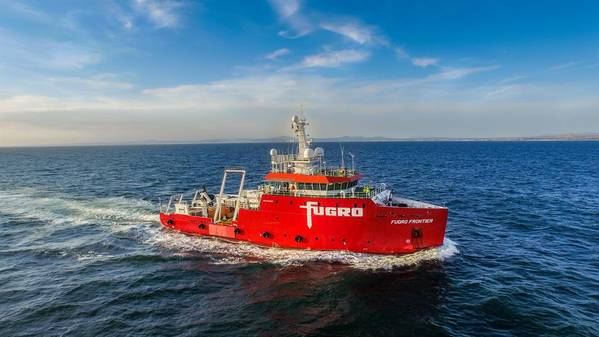
Dutch marine geotechnical survey firm Fugro said Wednesday it had completed fieldwork on a geophysical, geotechnical and environmental site investigation contract for RWE Renewables’ Dogger Bank South (DBS) offshore wind farm and export cable routes.
DBS is located in the UK North Sea, more than 110 km from the east coast of Yorkshire, England. It has the potential to provide electricity for up to 3.4 million homes in the UK each year.
The array area covers approximately 1,000 km2 with over 100 km of proposed export cable routes, resulting in a total survey scope exceeding 20,000 km of survey lines.
Trevor Baker, RWE Project’s Lead for Dogger Bank South said: “The offshore surveys are a very important aspect of the project’s development and the data collected will help inform the environmental impact assessment process and help in the engineering design of the wind farms."
Fugro said that it had sent out several ships from its fleet to do full coverage surveys.
This included seabed cone penetration tests (CPTs), sampling boreholes, multibeam echosounder surveys and the largest 2D ultra high-resolution seismic (UHRS) survey to be completed on a single project, Fugro said.
Fugro further said that its environmental surveys had comprised of grab sampling, epibenthic trawling and drop-down videos.
"The acquired Geo-data will be used to understand the site’s subsurface conditions, advise on geohazard risk mitigation and identify a safe route for export cables," Fugro explained.
Peter Aarts, Fugro’s Marine Geophysical Director Europe and Africa, said: “When considering a project of this scale, early access to Geo-data that provides actionable insights is key. With an understanding of the seafloor and sub-surface conditions, geohazards and environmental constraints, RWE will be able to make informed decisions on their wind farm foundation designs, whilst also reducing installation risks and ensuring the most efficient cable routes. We’re proud to support the future developmental phases of the Dogger Bank South wind farm project and the UK’s ongoing energy transition.”